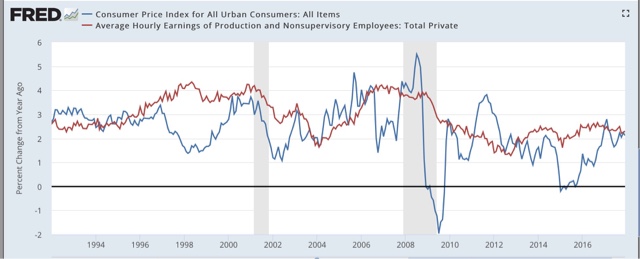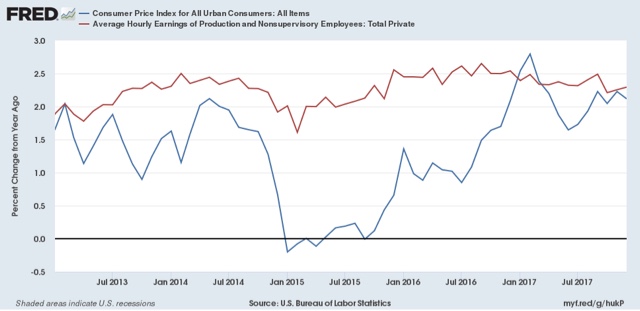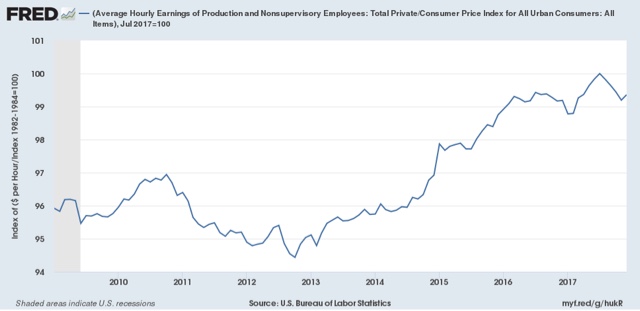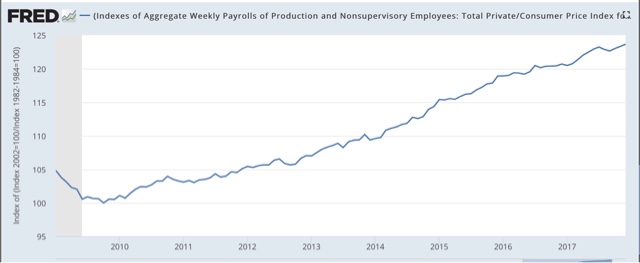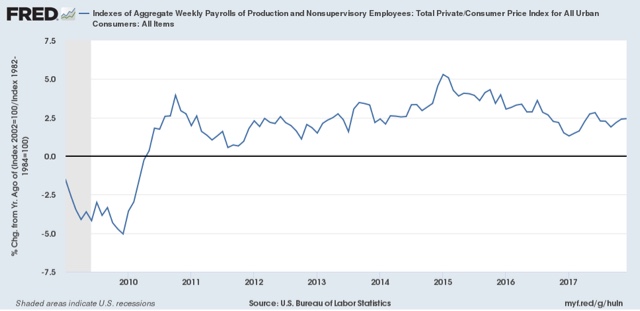Real wages in 2017 Now that we have the report on consumer prices for December, let’s take a look at what happened with real wages in 2017. Consumer prices increased +0.1% in December, and wages for non-managerial workers rose 0.3%, This for that month the average worker earned 0.2% more. For the year, the nominal wages of non-managerial workers rose 2.4%, while prices increased 2.1%, meaning that for the entire year workers saw a whopping 0.3% increase in real pay: Here’s a close-up of the last 5 years: But because inflation accelerated slightly in the second half of the year, and nominal pay increases slackened, real pay has actually decreased roughly -0.8% since peaking in July, and is barely up at all over the last 24 months. Next let’s
Topics:
NewDealdemocrat considers the following as important: Taxes/regulation, US/Global Economics
This could be interesting, too:
Joel Eissenberg writes How Tesla makes money
Angry Bear writes True pricing: effects on competition
Angry Bear writes The paradox of economic competition
Angry Bear writes USMAC Exempts Certain Items Coming out of Mexico and Canada
Real wages in 2017
Now that we have the report on consumer prices for December, let’s take a look at what happened with real wages in 2017.
Consumer prices increased +0.1% in December, and wages for non-managerial workers rose 0.3%, This for that month the average worker earned 0.2% more.
For the year, the nominal wages of non-managerial workers rose 2.4%, while prices increased 2.1%, meaning that for the entire year workers saw a whopping 0.3% increase in real pay:
But because inflation accelerated slightly in the second half of the year, and nominal pay increases slackened, real pay has actually decreased roughly -0.8% since peaking in July, and is barely up at all over the last 24 months.
Next let’s take a look at the real aggregate pay that non-managerial workers earned in 2017. I like this measure because it tells me how much the economy as a whole has delivered to the middle and working class during the economic expansion. Here’s the graph:
For the entire expansion, real aggregate pay has increased ~23%. On a YoY basis, aggregate real payrolls increased about 2.5%, about the average for this expansion:

